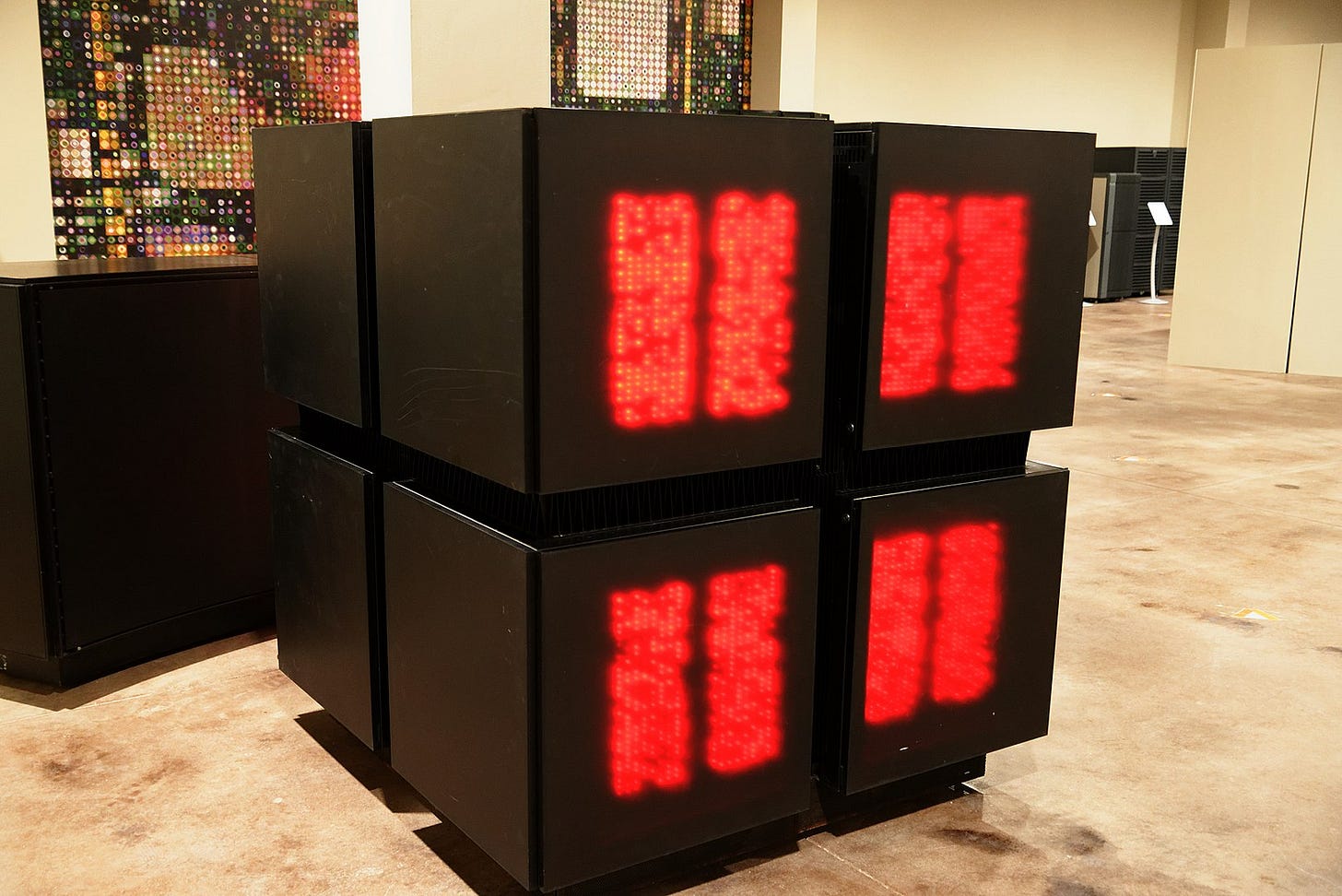Chip Letter Links No.6 : Gigatron, Altair, Thinking Machines, Awesome Emulators and More
Great links, reading and images for 20 October 2022
Hi everyone and thanks for subscribing. This is one of a regular series of posts with links, images and articles of interest, inspired by Adam Tooze’s excellent Chartbook.
Each edition starts with a beautiful die image. This week we have an Intel 10nm Alder Lake CPU courtesy of Fritzchens Fritz.
Gigatron
You don’t need a microprocessor to build a useable home computer. The ‘Gigatron’ uses simple TTL integrated circuits to construct a simple processor.
The capabilities of the Gigatron are pretty impressive for a design built with such simple components:
And the screenshots are equally impressive:
Link here.
Thinking Machines
In 1990, seven years after its founding, Thinking Machines was the market leader in parallel supercomputers, with sales of about $65 million. Not only was the company profitable; it also, in the words of one IBM computer scientist, had cornered the market "on sex appeal in high-performance computing."
Great article from Inc. on the remarkable story of the rise and fall of Thinking Machines Corporation, the maker of massively parallel computers.
Link here.
Awesome Open Source Emulators
Interesting list of emulators on Github. Including some important historic machines such as the Apollo Guidance Computer, PDP-8, Altair 8800, EDSAC, Intel 4004 and Enigma.
Not an exhaustive list of emulators (that would be a very long list!) but a good starting point.
Link here.
The Microprocessor : A Biography
An interesting book from the 1995, ‘The Microprocessor. A Biography’ by Michael Malone (author of ‘The Intel Trinity’. Lots of stories about the development of microprocessors.
One extract (below) shows how diverse the microprocessor market was in 1995. How many of these firms are still active today? And no mention of Arm!
It’s available to borrow from the Internet Archive here.
Altair 8800





An entertaining chronicling of the restoration of an Altair 8800 microcomputer on Twitter.
The Altair 8800 was an important early microcomputer. Quoting Wikipedia: ‘The Altair is widely recognized as the spark that ignited the microcomputer revolution’. Altair BASIC was the first product from the newly formed Miscosoft - or ‘Micro-Soft’ as it was known then.
The thread isn’t complete yet so we can follow the restoration as it progresses. The main take-away so far? These machines were solidly built!
Vacuum Tube Power Law
An interesting short article from Vaclav Smil exploring the rate of progress of development of vacuum tubes. The findings are summarised at the end:
To be sure, the trend lines of vacuum tubes and of integrated circuits involve different figures of merit. But it is certainly noteworthy that the first family of electronic devices improved as fast in its domain as the second family did in its different domain. A kind of Moore’s Law was in effect in electronics long before Gordon Moore set it down, in 1965.
Link here.
Whatever happened to the Nanocomputer?
Alan Perlis wrote in his entertaining ‘Epigrams on Programming’:
We have the mini and the micro computer. In what semantic niche would the pico computer fall?
We have the mainframe, mini, micro. Why wasn’t the next generation the nanocomputer when nano (10^-9) is the next logical step after micro (10^-6)?
There is a Wikipedia entry but it doesn’t really reflect normal use.
Even the Raspberry Pi jumped straight to pico (10^-12) with the ‘Pi Pico’.
Is ‘Nano’ now too closely associated with ‘Nanotechnology’?
Twitter
I’m on Twitter. Please come over and say hello!


Images Credits
Thinking Machines CM1
Computer Museum of America (51).jpg: Bubba73derivative work: User:Clusternote - This file was derived from: Computer Museum of America (51).jpg
CC BY-SA 3.0, https://commons.wikimedia.org/w/index.php?curid=115757708











